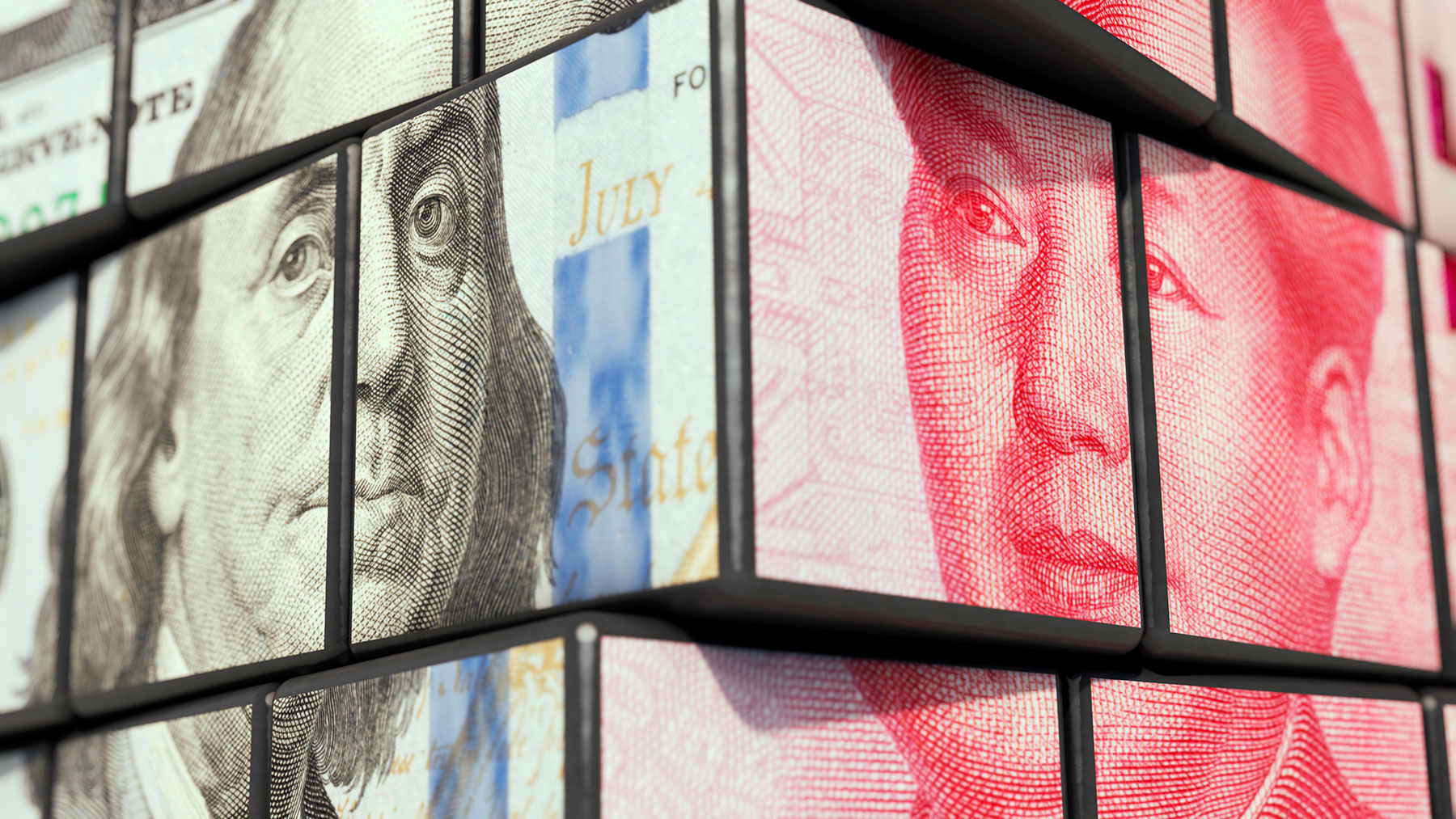When Chairman Xi Jinping was departing from Moscow on his last trip to Russia in March of this year, his farewell words to Vladimir Putin were the following: “We are encountering change unseen in a hundred years. Let us work together to drive it”. Those of us who took courses in Chinese history may recall that the first sentence is a direct quote from distinguished Chinese statesman and diplomat Li Hongzhang, who in 1872 warned the rulers of the Qing Empire that China had to start fundamental reforms in order to survive and to thrive in the emerging new world.
Back in March many observers considered Xi’s quote from the “Oriental Bismark” to be a rhetorical over exaggeration. Seven months later, when President Putin came to Beijing for the third Belt and Road Forum, this quote looks as stating the obvious. For the history of the humankind, seven months is nothing but a blink, but these days seven months can make a lot of difference.
Therefore, it is not surprising that the agenda of Xi-Putin discussions in Beijing was different from the agenda in Moscow. In March the two leaders could have still approached international developments in terms of damage limitation. In October, it is hard to deny that the damage to the old international system is already beyond repair. The post-Cold War world order that lasted for more than thirty years is unraveling with an accelerating speed. The remaining elements of this order are still with us, but not so much due to the resilience of the system, as to its accumulated inertia. Still, this inertia cannot last for too long.
It was essential that in Beijing Chairman Xi and President Putin did not limit themselves do discussing the bilateral China-Russia agenda, no matter how important this agenda appears to be. On top of talking about trade, investments, R&D, education, hydrocarbons and agriculture, they two leaders also focused on more strategic issues related to the disintegration of the old international system and on what should replace it. The core of the new system is going to emerge in Eurasia, which remains not only the most populous, but also the most dynamic and economically potent continent of our planet. The Belt and Road Forum, which attracted dozens of leaders from all the corners of our shared continent, was a perfect location to compare notes on the future destiny of Eurasia.
BRI, SCO, ASEAN, RCEP, CPTPP, CSTO, EAEU, CICA and may other multilateral Eurasian projects can be looked at as sprouts of the new international system germinating through the debris of the old one. These sprouts have to be properly watered, fertilized, pruned and groomed. Not all of them are likely to prosper or even to survive over long term, but each deserves a chance to make its unique contribution to the emerging Greater Eurasia’s security and development ecosystems.
When Chairman Xi Jinping was departing from Moscow on his last trip to Russia in March of this year, his farewell words to Vladimir Putin were the following: “We are encountering change unseen in a hundred years. Let us work together to drive it”. Those of us who took courses in Chinese history may recall that the first sentence is a direct quote from distinguished Chinese statesman and diplomat Li Hongzhang, who in 1872 warned the rulers of the Qing Empire that China had to start fundamental reforms in order to survive and to thrive in the emerging new world.
Back in March many observers considered Xi’s quote from the “Oriental Bismark” to be a rhetorical over exaggeration. Seven months later, when President Putin came to Beijing for the third Belt and Road Forum, this quote looks as stating the obvious. For the history of the humankind, seven months is nothing but a blink, but these days seven months can make a lot of difference.
In March, there still were hopes that the Russian-Ukrainian conflict could climax in a new Ukrainian counteroffensive sometime in late spring or in early summer, after which a window of opportunity for a diplomatic dialogue would open. By mid-October, no such window is seen opening anytime soon. Moreover, there are clear signs of further escalation with the Unted States and other NATO countries supplying Kyiv with more and more advanced weapons including M1 Abrams tanks, ATACMS ballistic missiles and so on. The conflict is spreading deep into Russia’s territory with Ukrainian drones hitting targets in downtown Moscow.
In March, many still counted on some magic solutions to the US-China economic disputes. According to Chinese sources, in 2022 bilateral trade continued to grow and reached a new record of US$ 759 billion; the beginning of 2023 also looked promising. However, in summer it became clear that ‘business as usual’ had hit the wall: over the first the quarters of 2023 the US-Chinese trade plummeted by astonishing 14% and this decline was flowed by similar trends in China’s trade with American allies in Europe and in Asia. Even more importantly, Washington de-facto launched a full-fledged technological war against Beijing, depriving the Chinese economy from the most advanced chips and other innovative technologies.
In March, there were expectations that strategic arms control, which had been already stalled, could still be resurrected before too long. By October, it has become evident that the US-Russian arms control—at least, in its traditional format -is already history. On top of that, the main multilateral pillars of nuclear arms control, such as the Nonproliferation Treaty or the Comprehensive Nuclear-Test-Ban Treaty, are cracking literally in front of our eyes.
In March, one could expect that the military conflict in Europe would stay in Europe with only limited negative impact on other troubled regions of the world. By October, after a chain of dramatic and tragic events in Sahel, in the South Caucasus and, finally, between Israel and Palestine, it has become increasingly obvious that today we confront not just another regional, but a global crisis, and the escalatory spiral of the crisis is only beginning to unfold.
Therefore, it is not surprising that the agenda of Xi-Putin discussions in Beijing was different from the agenda in Moscow. In March the two leaders could have still approached international developments in terms of damage limitation. In October, it is hard to deny that the damage to the old international system is already beyond repair. The post-Cold War world order that lasted for more than thirty years is unraveling with an accelerating speed. The remaining elements of this order are still with us, but not so much due to the resilience of the system, as to its accumulated inertia. Still, this inertia cannot last for too long. One can lament about the unquestionable merits and comparative advantages of the Ancien Régime, but the reality is that its days are now numbered.
It was essential that in Beijing Chairman Xi and President Putin did not limit themselves do discussing the bilateral China-Russia agenda, no matter how important this agenda appears to be. On top of talking about trade, investments, R&D, education, hydrocarbons and agriculture, they two leaders also focused on more strategic issues related to the disintegration of the old international system and on what should replace it. The core of the new system is going to emerge in Eurasia, which remains not only the most populous, but also the most dynamic and economically potent continent of our planet. The Belt and Road Forum, which attracted dozens of leaders from all the corners of our shared continent, was a perfect location to compare notes on the future destiny of Eurasia.
BRI, SCO, ASEAN, RCEP, CPTPP, CSTO, EAEU, CICA and may other multilateral Eurasian projects can be looked at as sprouts of the new international system germinating through the debris of the old one. These sprouts have to be properly watered, fertilized, pruned and groomed. Not all of them are likely to prosper or even to survive over long term, but each deserves a chance to make its unique contribution to the emerging Greater Eurasia’s security and development ecosystems.
The wise warning of Li Hongzhang a century and a half ago did not get the needed attention in Beijing or elsewhere. As a result, in 1911 a violet revolution brought down the Qing Empire, and six years later the Romanov Empire followed its Eastern neighbor into oblivion. History does not need to repeat itself another time—both Chia and Russia can draw appropriate lessons from their past traumatic experiences. Unlike it was the case in the early XX century, today they are in a position, as Chairman Xi rightfully observed, work hand in hand with each other to drive the badly needed change in the world.






